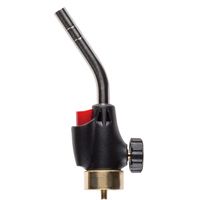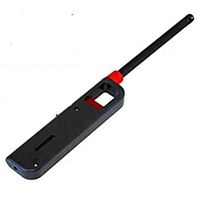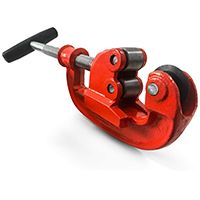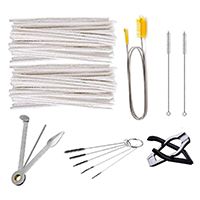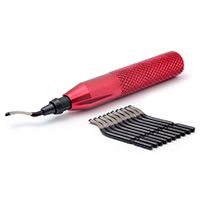We may be compensated if you purchase through links on our website. Our team is committed to delivering honest, objective, and independent reviews on home products and services.
Soldering is a fundamental skill in plumbing that allows for the secure connection of copper pipes. This technique has been the go-to method for joining copper pipes for over a century, providing reliable and long-lasting results.
In the video, This Old House plumbing and heating expert Richard Trethewey demonstrates the essential steps and techniques for successful soldering. This guide will spell out those steps and add some tips for do-it-yourselfers learning how to solder.
Understanding Soldering
Soldering is the process of joining two pieces of metal using a filler metal called solder. When heated, the solder melts and flows into the joint, creating a watertight seal upon cooling. There are heat-free alternatives like special bonding glue and crimping devices, but soldering remains the standard.
The Importance of Soldering in Plumbing
Soldering plays a crucial role in a number of different industries, such as electronics and metalwork. It’s also used to create reliable plumbing systems out of copper pipes and fittings. It allows for:
- Durable joints that can withstand pressure and temperature changes
- Long-lasting plumbing systems that can serve a home for many years
- Watertight connections that prevent leaks
Materials Needed for Soldering
Before beginning a soldering project, gather the following materials, which can be found at most home centers and plumbing supply stores:
- Copper pipes and fittings
- Deburring tool
- Emery cloth or wire brush
- Flux
- Pipe cutter (if needed)
- Propane torch
- Safety glasses
- Solder (lead-free for plumbing applications)
- Heat-resistant gloves
- Flame shield (if working near wood)
- Spray bottle filled with water
- Clean rags
Preparing for Soldering
Proper preparation, particularly cleaning, is key to successful soldering. Deburring, also called reaming, is the process of removing small irregularities from a cut pipe.
- Shut off your home’s water supply at the main valve and empty any remaining water from the faucets.
- Cut pipes to length by rotating the cutter around the pipe, tightening it slightly with each rotation until the pipe is cut through.
- Use an emery cloth or wire brush to clean the outside of the pipe ends.
- Clean the inside of the fittings with a wire brush.
- Use a deburring tool to remove any burrs from the cut pipe ends.
- Wipe all surfaces clean with a rag to remove any debris and fingerprints.
Pro tip: Burrs, debris, and contaminants—including the oil from your skin—can prevent the solder from flowing into the joint and keep a solid connection from forming. The pipe should shine like a new penny before you begin.
The Soldering Process
With pipes cut and cleaned, you’re ready to begin soldering.
Applying Flux and Preparing Solder
- Apply a thin, even layer of flux to the outside of the pipe end.
- Apply flux to the inside of the fittings.
- Insert the pipe into the fitting, ensuring it’s fully seated.
- Unwind the solder from the spool and cut off about 8–10 inches.
- Bend the amount of solder you need for the current joint at a 90-degree angle from the tip.
Pro tip: The amount of solder you need for a pipe fitting is about the same as the diameter of the pipe. For example, you’ll need about 1 inch of solder for a 1-inch diameter pipe.
Heating the Joint
- Put on safety glasses and heat-resistant gloves.
- If working near wood, use a flame shield and keep a spray bottle of water handy.
- Light the propane torch and adjust the flame.
- Apply the tip of the flame’s cone (the hottest part of the flame) to the fitting opposite where you plan to apply the solder. Hold there for four to five seconds until the flux begins to sizzle.
- Move the flame to the opposite side of the fitting and hold for four to five seconds to ensure even heat distribution.
Pro tip: Don’t heat the solder with the flame. It has a much lower melting point than the copper and will simply break off if you apply the heat directly to it.
Applying Solder
- When the flux begins to bubble, touch the solder to the joint on the opposite side of the pipe from the flame.
- If the joint is hot enough, the solder will melt and be drawn into the joint.
- If the solder didn’t melt or didn’t wrap around the entire connection, continue to heat the pipe up and try again.
- Remove the flame once the joint is filled with solder.
Pro tip: Solder flows toward the hottest part of the metal. That’s why you apply it to the opposite side of the pipe from the flame. When done correctly, you shouldn’t need to do more than touch the tip of the solder to the joint.
Cooling and Cleaning
Allow the joint to cool naturally. Do not use water to cool it, as this can cause the joint to crack. Once cool, use a clean rag to wipe away any excess flux or solder.
Safety Precautions
Soldering involves working with high temperatures and open flames, so these safety precautions are worth keeping in mind:
- Have a fire extinguisher nearby in case of emergencies.
- Keep a spray bottle of water handy to wet down nearby wood surfaces.
- Use a flame shield when working near wood or other flammable materials.
- Use heat-resistant gloves to prevent burns.
- Use lead-free solder on pipes that carry drinking water.
- Wear safety glasses to protect your eyes from solder splatter.
- Work in a well-ventilated area to avoid inhaling fumes.
Troubleshooting Common Soldering Issues
Soldering is a skill that takes a bit of practice to perfect, and even experienced plumbers can sometimes encounter issues when soldering. What follows are some common problems and their solutions.
Solder Not Flowing
If the solder doesn’t flow into the joint:
- The joint may not be hot enough. Apply more heat and try again.
- The surfaces may not be clean enough. Disassemble, clean thoroughly and retry.
- The flux may have burned off. Allow the metal to cool, then remove the fitting, clean, reapply flux, and try again.
Leaky Joints
If you discover a leak after soldering, allow the joint to cool completely, then reheat and apply more solder. If reheating doesn’t work, you may need to cut out the joint and start over.
Discolored or Burnt Pipes
Discoloration or burnt pipes indicate that you’ve overheated the metal while soldering. Next time, use less heat or avoid leaving the flame on one portion of the pipe for too long. If the burn damage is severe, you may need to cut that section out and replace it.
Soldering Tips for Beginners
If you’re new to soldering, there are a few tips that can make the learning process smoother and help you achieve better results:
- Assure uniform heating: Ensure that you move the flame evenly around the joint. This helps the solder to flow and distribute uniformly, creating a stronger bond.
- Control the flame: Understanding how to control the heat put out by the torch is crucial. Too much heat can burn the solder, while too little won’t melt it properly.
- Have adequate ventilation: Always work in a well-ventilated area. Soldering can produce fumes that are best avoided by having proper air circulation in your workspace.
- Practice on scrap pieces: Start by soldering scrap pieces of copper pipes. This allows you to get a feel for the heat, flux, and solder without risking your plumbing system.
Advanced Techniques for Soldering
Once you have mastered the basics, you might want to explore advanced techniques that can make your soldering projects even more efficient and visually appealing.
Pre-Soldering Assemblies
For larger plumbing projects, pre-soldering assemblies can save time. Pre-soldering means preparing sections of pipes and fittings on a workbench before installing them in place. This technique minimizes the need to solder in tight or awkward spaces and reduces the risk associated with working near flammable materials.
Using Soldering Jigs
Soldering jigs are fixtures designed to hold pipes and fittings in place, ensuring precise alignment during the soldering process. These jigs can be particularly helpful when working on complex assemblies or when precision is crucial.
Heat-Reflective Tools
Heat-reflective tools, such as heat sinks and heat-reflective cloths, help manage and direct the heat during soldering. This can be particularly useful when soldering near sensitive components or materials that could be damaged by excess heat. These tools allow for more controlled and efficient heating, leading to better solder joints.
Our Conclusion
While large plumbing projects should be left to licensed plumbers, you can often fix leaks or replace fittings and small lengths of copper piping yourself if you know how to solder. With the proper preparation and careful attention to safety, you can create durable, watertight connections in your home’s plumbing system. While alternatives exist, the time-tested method of soldering remains a reliable choice for joining copper pipes.
